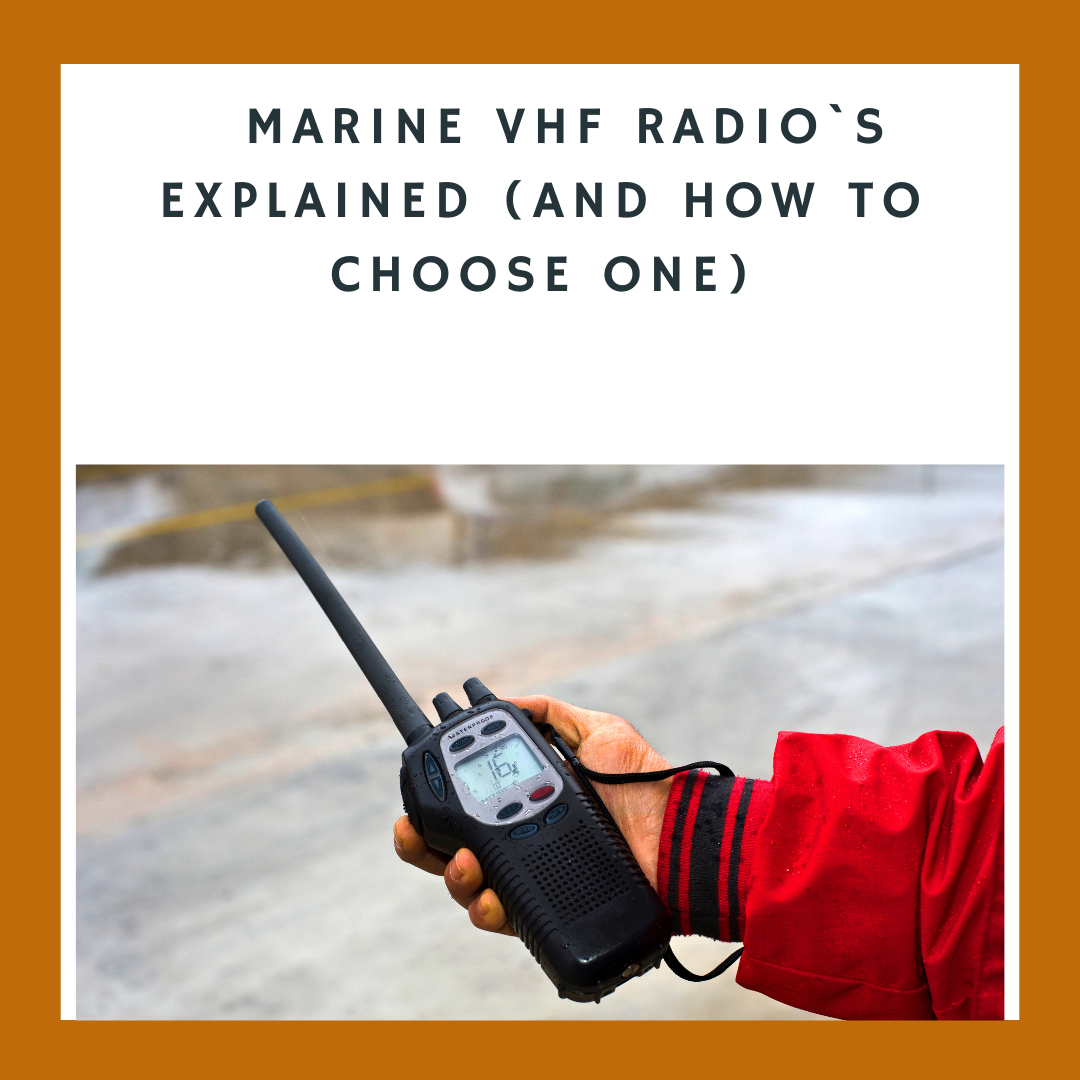
Marine VHF Radio`s explained (And how to choose one)
Dylan KemloMarine VHF Radio`s explained (And how to choose one)
A marine VHF radio is a vital short-range, two-way communication tool for boaters in coastal and inland waterways. It is primarily used to contact rescue services, harbors, locks, and other vessels. Unlike cell phones, VHF radio transmissions are broadcast to everyone within range, including the U.S. Coast Guard, which significantly increases safety in an emergency.
Types of VHF marine radios
There are two main types of VHF marine radios to consider, each with their own distinct advantages:
|
Feature |
Fixed-mount radios |
Handheld radios |
|
Power and range |
Transmits up to 25 watts, offering a longer range of 20 miles or more. The range is highly dependent on the height of the external antenna. |
Has a lower power output, typically 1 to 6 watts, which provides a shorter range of about 5–8 miles. |
|
Power source |
Wired into the boat's electrical system, providing a reliable power supply. |
Operates on rechargeable batteries. Some models also have a tray for disposable batteries as a backup. |
|
Portability |
Permanently installed in the vessel. |
Portable and can be carried with you, including into a life raft during an emergency. |
|
Suited for |
Best for larger boats and for offshore use where longer-range communication is critical. |
Excellent for smaller vessels like kayaks, as a backup radio, or for communicating within a marina. |
How to choose a VHF marine radio
The right choice depends on your boating habits and location. When comparing models, look for the following key features:
- Digital Selective Calling (DSC): This is the most important safety feature on modern VHF radios. When connected to your GPS, DSC allows you to press a single button to send an automated distress alert that includes your vessel's location and identity via a unique Maritime Mobile Service Identity [MMSI] number.
- Built-in GPS: To use the location-transmitting feature of DSC, the radio must be integrated with a GPS. Some higher-end models come with a built-in GPS receiver, while others must be wired to your vessel's chart plotter.
- Waterproof rating: Look for a radio with a high waterproof rating (IPX7 or IPX8), as it will be exposed to the elements. An IPX7-rated radio can withstand immersion in water.
- Floating capability: For handheld radios, a buoyant body is a major benefit. Some models are designed to float face-up and have a flashing strobe light for easy retrieval if dropped overboard.
- NOAA weather alerts: Many radios can receive NOAA weather alerts, providing you with real-time updates on storms and other marine hazards.
Proper VHF radio use
Using your VHF radio correctly is a matter of safety and protocol. Always remember to follow basic radio etiquette.
- Emergency calls (Mayday):
- Switch to Channel 16, the international distress frequency.
- State "MAYDAY" three times, your vessel's name three times, and then provide your position and the nature of the emergency.
- If you have a DSC-equipped radio, first use the distress button for instant location transmission.
- Routine communication:
- Hail on Channel 16: Contact another vessel or shore station by announcing their name three times, followed by your vessel's name once.
- Switch to a working channel: Immediately move your conversation to a designated working channel (e.g., 68, 69, 71, or 72) to keep Channel 16 clear for emergencies.
- Use low power: For close-range communication, use the low-power (1 watt) setting to avoid unnecessary interference.
- Radio check:
- Do not use Channel 16. Instead, use a working channel, or if available, use a designated automated radio check system provided by services like Sea Tow.
- To perform a manual check, tune to a working channel, key the microphone, and say "Radio check, radio check, radio check, this is [your boat's name]
As a final note, remember that Marine VHF radios use the frequency range of 156–174 MHz to send and receive signals via line-of-sight communication. The higher your antenna, the greater your communication range.
For further information on Marine Radio`s and two way radio communications please email dylan@talkingradio.net